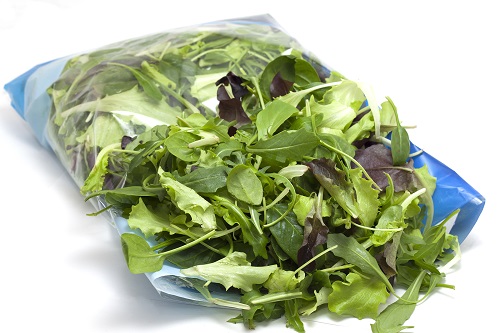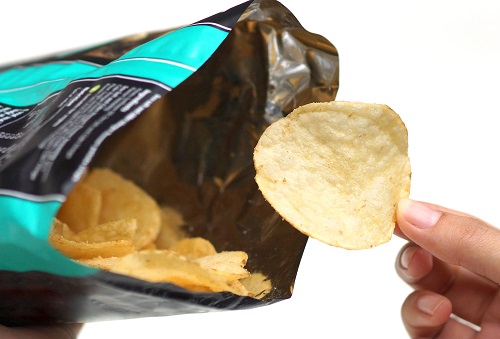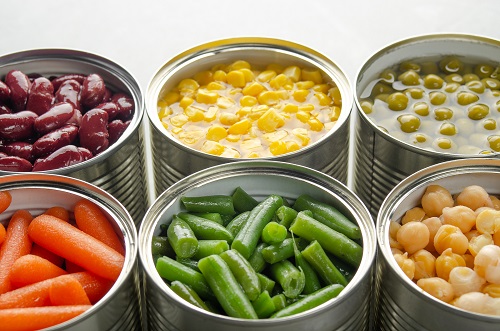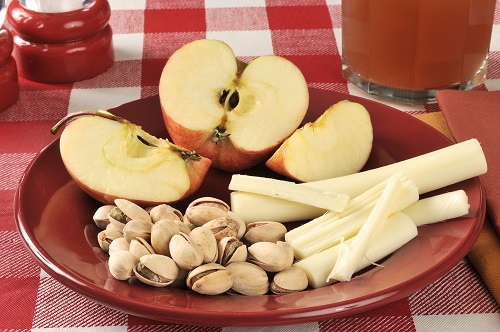Health advice often says to “avoid processed foods.” This sounds great at first, but what exactly is a “processed” food? You may be surprised to know that we recommend processed foods all the time!
A healthful diet can include all foods in many different forms, including packaged and processed options. In fact, they can be convenient and affordable! Before you go shopping, check out this blog to learn more.
What is a “processed” food?
Most of our foods have some level of processing by the time they get to the stores. This is because processing includes steps such as:
- Washing or cleaning
- Cutting
- Pasteurizing (pass-chur-eye-zing) or heating (a process that kills bacteria)
- Canning
- Freezing
- Blanching or cooking
- Packaging
- Adding ingredients
- And many more! [1]
So, by definition, all our food becomes processed at some point. Even as we cook it! Foods like frozen vegetables, canned fruits, and even fresh produce go through some level of processing. These steps may make a food safer to eat, allow them to stay fresh longer, or make eating healthy more convenient. Sometimes processing adds vitamins and minerals, or it’s used for flavor! [2]

Why the bad reputation?
We don’t label any foods as “good” or “bad” here at UGA SNAP-Ed. However, sometimes processing can take away beneficial parts of a product. Removing the outside of a grain creates refined grains (white rice and flour) with less fiber and vitamins. Peeling certain fruits can take away the nutritious outer layer. To be shelf stable or packaged, processing might also include adding ingredients that we want to limit overall. [3]
We’ve talked about limiting sodium, added sugar, and saturated fat for health:
- High amounts of sodium every day are linked to high blood pressure. [4]
- Added sugars add excess calories and may contribute to an unhealthy body weight. [5]
- Too much saturated fat can lead to heart disease. [6]
Highly processed foods can contain a lot of these nutrients. They may be added to help prevent the food from going bad, or just for the taste. Either way, we can read the nutrition facts label to choose the best options for our health goals. Learn more about reading a nutrition facts label with our blog, Food Label Facts.

Should we stay away from processed foods?
We say, “No!” It’s untrue to say that processed foods are harmful and need to be avoided. In fact, some foods are healthier and safer when processed.
For example, milk is pasteurized (heated to high temperatures) to kill dangerous bacteria. It may also have calcium and vitamin D added to it in amounts greater than what milk contains naturally. This is an example of a processed food we want more of!
Other examples include pre-washed veggies, canned beans, and 10-minute rice. These foods are processed to make them more convenient. Processing can save time in the kitchen! Canned, frozen, and packaged foods may also last longer after purchasing. Even more processed foods like whole grain crackers can be part of a healthy diet. In other cases, processed foods are just plain yummy!
Overall, processed foods can often make the healthy choice the easy choice.

What should we focus on?
Processed foods come in many forms. Some forms might be more health-promoting than others. The Academy of Nutrition and Dietetics breaks down processed foods into different categories based on the amount of processing used:
- Minimally (barely) processed—pre-washed or cut veggies and roasted nuts for convenience.
- Processed at their peak—frozen fruits and veggies, canned beans, and canned fish processed at their peak for nutritional quality and freshness.
- Foods with ingredients added for flavor and texture—pasta sauce, yogurt, and dried fruit.
- Processed and ready-to-eat—crackers, granola, and deli meat can be eaten without additional cooking.
- Highly processed—pre-made meals and snacks that tend to be lower in healthful nutrients and high in sodium, added sugar, and saturated fat. [2]
We should aim to eat mostly foods from the less processed categories, but there’s still room for balance! When eating highly processed foods, consider pairing them with minimally processed options, too. And remember to read the nutrition facts label.
Try these pairings for a healthy, balanced snack that uses processed foods:
- Sliced apple, cheese stick, and roasted nuts
- Canned chicken or fish served on whole wheat crackers
- Trail mix made with dried fruit, roasted nuts, and whole grain cereal or popcorn
- Granola bar with a banana and peanut butter

The Bottom Line
Avoiding all processed foods might actually be worse for our health! We would miss out on lots of nutrients, and cooking or snacking would be harder. Foods with more processing can still be tasty options to enjoy within a balanced diet. Instead of vowing to “cut out” all processed foods, focus on a diet rich in:
- A variety of fresh, frozen, and canned fruits and vegetables (no salt or syrup added versions),
- Whole grains (from sources like rice, bread, and crackers),
- Lean proteins,
- Low-fat dairy,
- And unsaturated fats from oils and foods.
Melanie Ng, Ph.D. Candidate | Reviewed by Leslie Davis, MS, RD, LD, CDCES and the Nutrition Education Team
Posted: June 28, 2021
[1] MSU Extension—What is a processed food?
[3] Harvard Nutrition Source—Processed Foods and Health